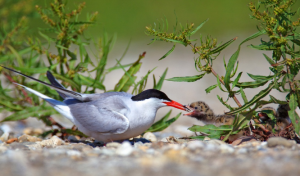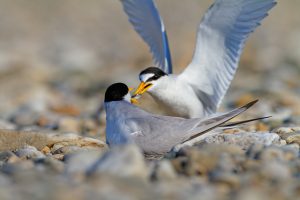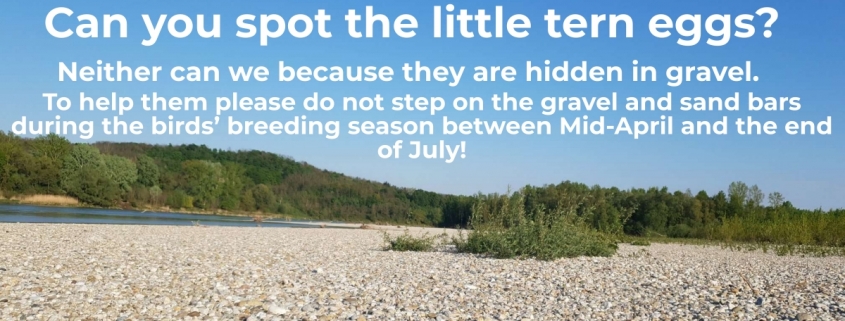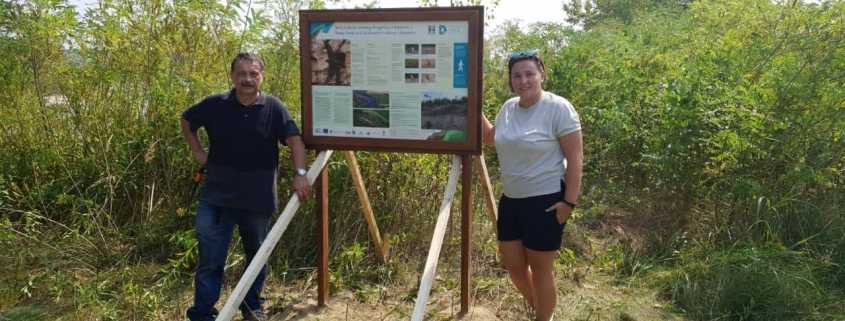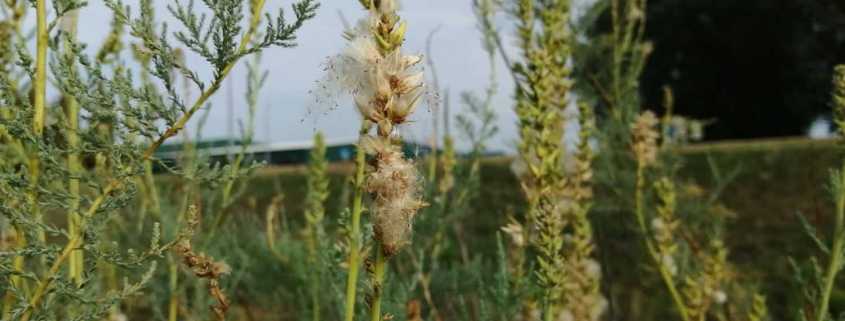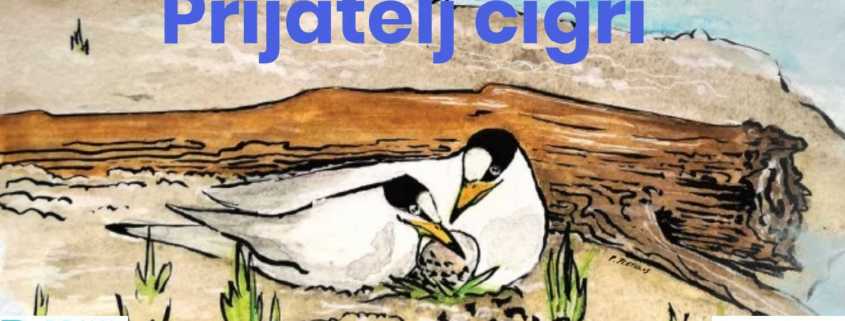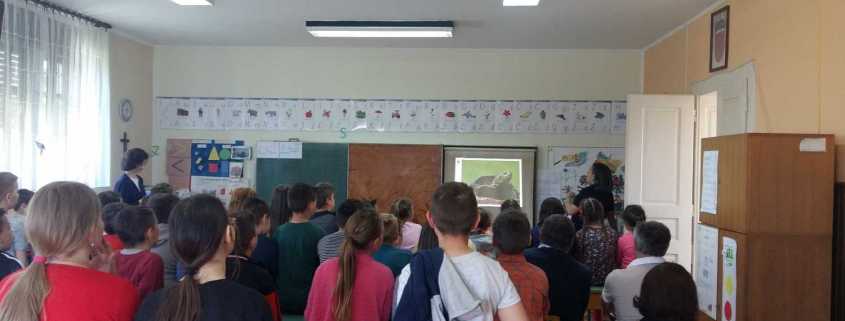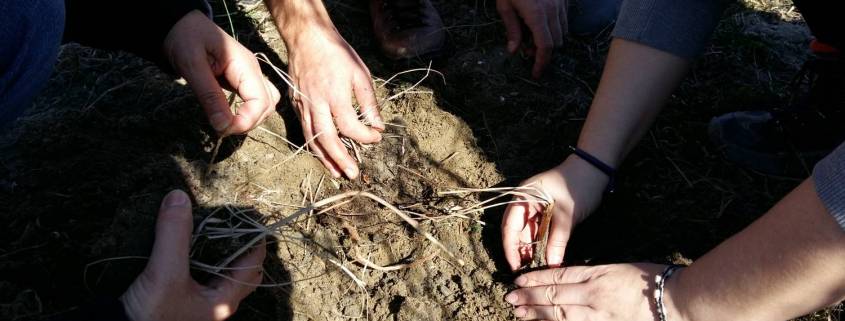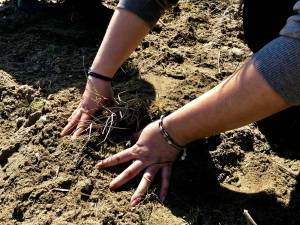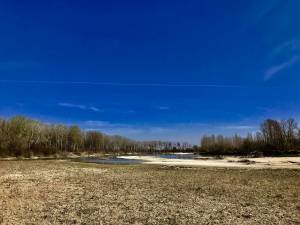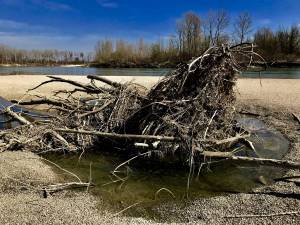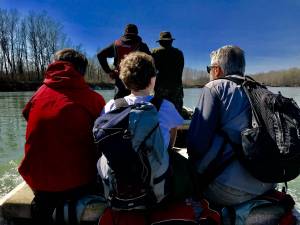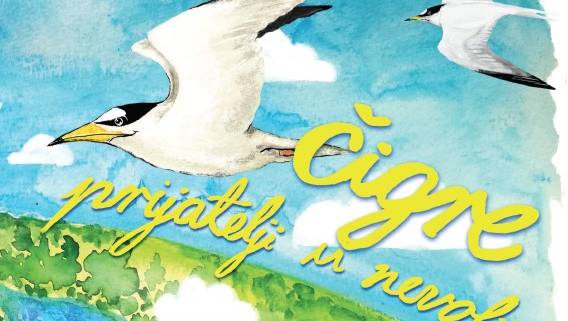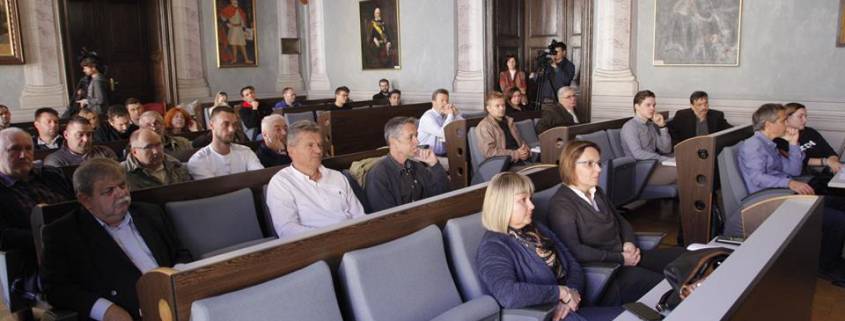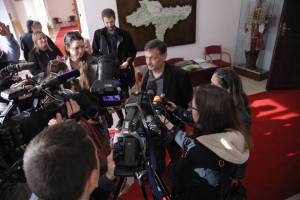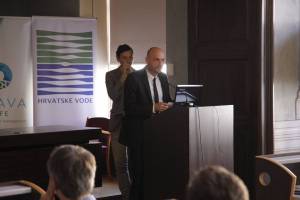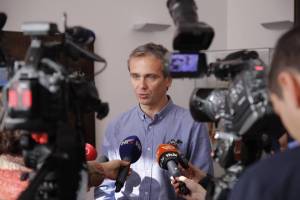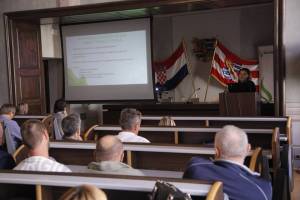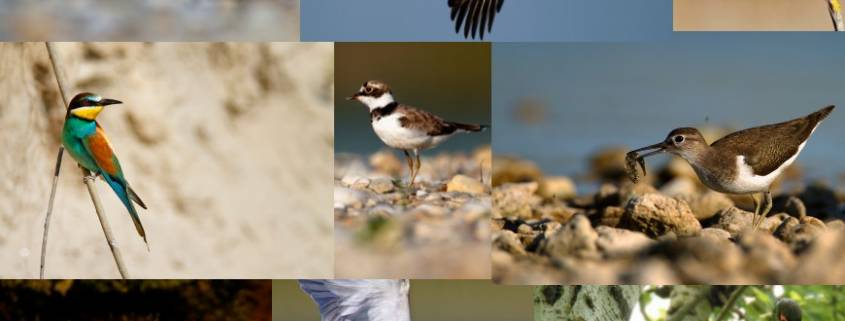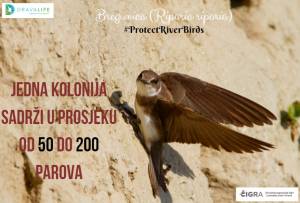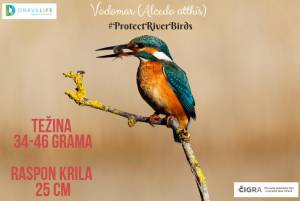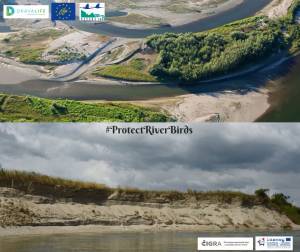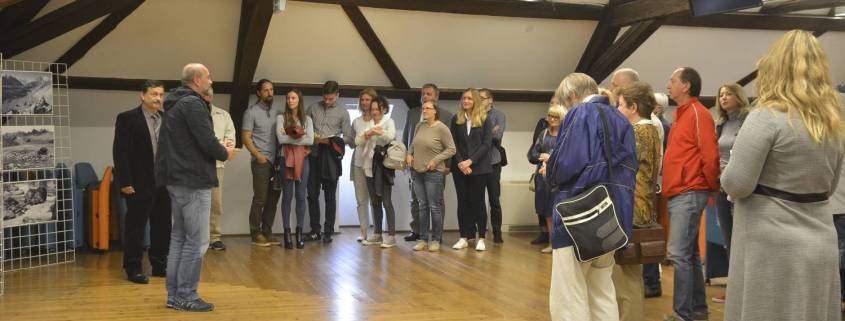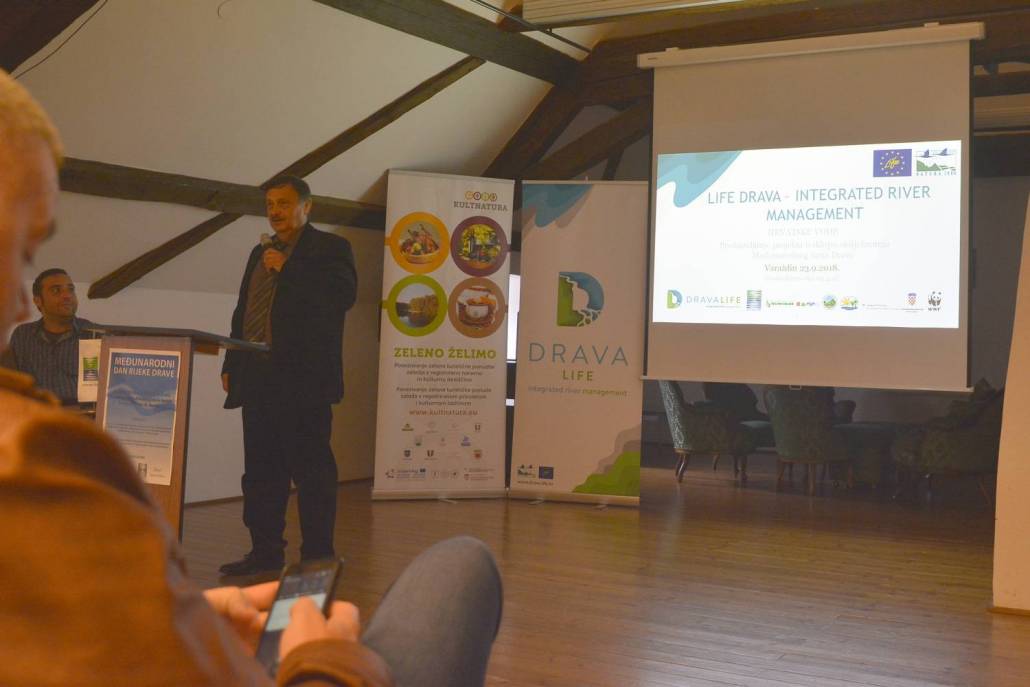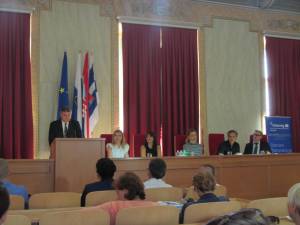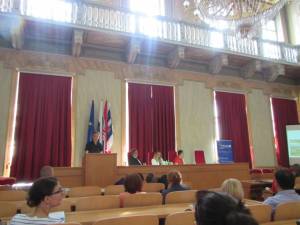Zagreb – The two non-governmental organizations WWF Adria and BIOM within the 2018 Year of the Tern and within the framework of their separate EU projects have carried out a number of activities focused on education and protection of the tern populations and their habitats in Croatia.
At the beginning of 2018 BIOM set up a floating nesting platform at Lake Siromaja 2 near Rugvica. In addition, 17 birds were marked with GPS-UHF devices to investigate their movement and use of habitats. Prior to the arrival of the terns in spring the gravel bars were cleaned and prepared for nesting.
A seven day training camp for the school children called “Our Drava” was held in June near Drava river in Varaždin county. Representatives of WWF Adria held a workshop on the importance of river birds and their habitats, with a special emphasis on Little terns (Sternula albifrons) and Sand martins (Riparia riparia). The students had the opportunity to learn about the species, flora and fauna on Drava river, habitats and their importance for the biodiversity of freshwater ecosystems.
In autumn BIOM organized several volunteer actions called “Č-igranje” on Rakitje lake near Zagreb, where gravel bars have been cleaned for the arrival of the terns next year. The bars were cleaned of new-grown vegetation and covered with 50 cubic meters of gravel. On the lakes Rakitje and Siromaja 2, information boards were placed to inform and warn the locals and other recreationists not to disturb the birds when they are nesting.
During September and October over 8,000 people joined the #ProtectRiverBirds digital campaign over a period of 3 weeks. The purpose of the social media campaign was to raise awareness on the importance of protecting river birds and their habitats. The campaign was launched by WWF Adria in cooperation with BIOM and supported by numerous organizations, civil initiatives and institutions like Hrvatske vode, Public Institution of Međimurje County, Nature Parks Lonjsko Polje and Kopački rit, non-governmental organizations Zeus-Senjar, Green Osijek, Croatian Society for Bird and Nature Protection, BED – Brodsko ekološko društvo, LUMEN Association, Rafting Club Matis Varazdin, Art Center Jeskovo, Dravska priča, and many other individuals, scientists, biologists, artists and nature lovers.
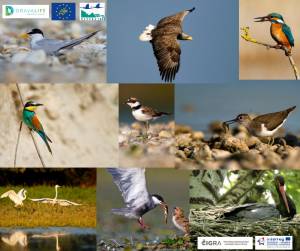 “The improvement of river dynamics as well as conservation efforts and protection of the last breeding pairs of Little tern on Drava river is highly important for the whole DRAVA LIFE – Integrated river management project. We need to raise awareness and inform the local population not to disturb the birds on the Drava river during the nesting period. Some of the last natural habitats can be found on the 50 km long strech of the Drava river in Koprivnica-Križevci County”, added Branka Španiček from WWF Adria.
“The improvement of river dynamics as well as conservation efforts and protection of the last breeding pairs of Little tern on Drava river is highly important for the whole DRAVA LIFE – Integrated river management project. We need to raise awareness and inform the local population not to disturb the birds on the Drava river during the nesting period. Some of the last natural habitats can be found on the 50 km long strech of the Drava river in Koprivnica-Križevci County”, added Branka Španiček from WWF Adria.
In December WWF Adria published 2 publications, a children’s booklet called “Čigre, prijatelji u nevolji” and a 3D cut-out mobile of the Little tern. Several educational workshops for schoolchildren were organized in schools and kindergardens at the end of the year where children got their copy before the holidays.
The common and Little tern are strictly protected birds in Croatia under the Nature Protection Act (OG 80/13) and the Ordinance on Strictly Protected Species (OG 144/13) and are listed in Annex 1 of the European Birds Directive. In the Red Book of Birds in Croatia, the nesting population of common tern is listed as an almost endangered species, while the Little tern is listed as threatened.
